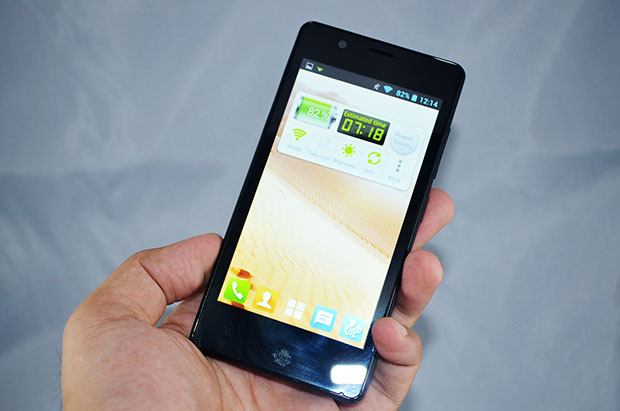
In case you missed my full review of the Gionee Pioneer P4, feel free to check it out here. However, I wasn’t able to go too in depth about the gaming aspect of Gionee’s entry-level pocket monster (mostly because the review was already getting too long). Of course, it doesn’t make sense to tout the Pioneer P4’s gaming capabilities if it doesn’t have its own separate gaming review, right?
Well, that’s what I decided to do after finishing the Pioneer P4 review. In order to test the P4’s gaming prowess, I played three of the most popular HD games available on the Play Store right now. But before that, I ran it through two gaming benchmark applications, which some of you guys should be familiar with.
Gaming Benchmarks
The first gaming benchmark I ran the Pioneer P4 through was Nenamark 2. Nenamark 2’s benchmark consists of a single scene that runs through a range of different lighting and texture effects. It’s not the heaviest benchmarking scene out there, but it’s a start. Here’s how it scored.

This is certainly very promising. Nenamark 2 caps the maximum achievable score right around 60fps, which means casual 3D games should be no problem for the Pioneer P4. Of course, if you’re going to call it a gaming phone, you’re not going to be satisfied with just casual games right?

The second gaming benchmark tool I used was GFX Benchmark. This particular benchmarking tool comes with a wide range of tests, but I only really needed to use one: the T-Rex scene on native resolution. Similar to Nenamark 2, the T-Rex scene goes through an entire sequence that makes use of a variety of effects. Of course, this one is a much more hardcore test and can be compared to some of the hardcore 3D games that can be installed on Android. How did it fare?

8.9fps might not seem impressive, but take a look at one of the other phones that scored similarly in the same test. It achieved the same frame rates as a Lenovo K900, which was a flagship class phone at one point.
Gaming Test
Of course, benchmarks are nothing if the doesn’t perform well while playing the actual game. So I went ahead and tried a few of my favorite games for good measure. The first one I played was Dead Trigger 2 because of its relatively small installation footprint and the ability to choose between a low or high graphics setting. Naturally, I went ahead and cranked it up to high.

Despite the heavier rendering load, frame rates were still quite smooth. Controls were also adequately responsive, which is definitely important on a first person shooter that throws zombies at you in every direction.
The next game I played was Minion Rush, which is deceptively heavy on the system, especially when you consider its simplistic yet fast-paced gameplay style.

Surprisingly enough, the Pioneer P4 rendered the scenes well without noticeable slow down in frame rates or responsiveness. Considering a lot of the earlier HD phones phones with quad core processors struggled to achieve smooth frame rates on this game, I’d say this is an achievement.
The last game I decided to test the Pioneer P4 on was Real Racing 3. While it’s a free game, it has a gigantic installation footprint, requiring you to free up a couple of gigs of storage if you want to play it. It’s one of the most realistic racing games available on the Play Store and one of my favorite time-killers too. After playing in a few races, I was impressed.

First of all, the opening cinematic isn’t pre-recorded. It actually uses the game’s engine and therefore the phone’s resources to play it and I was surprised that it was as smooth as it was. On some of the older quad core phones, frame rates would slow down noticeably as the scene would get busy, and the audio would often leave the video behind. I was equally impressed while playing the game as controls were very responsive and frame rates were adequately smooth.
The Verdict

Excelling at racing games requires perfect timing and precise controls, and delayed responsiveness can throw off even some of the best racing gamers. Actually, the same can be said for just about any game. The responsiveness of your phone in a game can spell the difference between consistently achieving a high score and simply losing before you get to have any fun. That’s true whether you’re playing something as simple as Temple Run or as graphically heavy as Minion Rush or Real Racing 3.

The Gionee Pioneer P4 certainly performed well across the board save for the T-Rex benchmark test and even then it performed much better than its price point would indicate. The only drawback is its relatively low resolution screen, which actually contributes to the higher frame rates its able to achieve. Still, I’d take smooth frame rates and great responsiveness over sharp resolution but stuttery game performance.

Well, I hope you guys liked this gaming-centered review. I realize I should have included video but time constraints prevented me from doing so (needed to return it). Hopefully, I’ll be able to do something like this again with some of my future review units.



try to make a video on this kuya jm